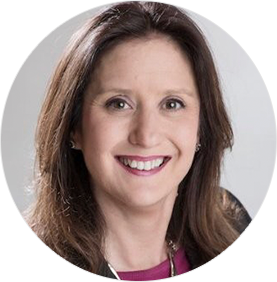Episode 109: Avner Baruch on Building an Effective Enablement Function From Scratch
3.2K Views | 23 Min Read
Shawnna Sumaoang: Hi, and welcome to the Sales Enablement PRO podcast. I am Shawnna Sumaoang. Sales enablement is a constantly evolving space and we’re here to help professionals stay up to date on the latest trends and best practices so that they can be more effective in their jobs.
Today, I’m excited to have Avner from WalkMe join us. Avner, I would love for you to introduce yourself, your role, and your organization to our audience.
Avner Baruch: Hi, thanks Shawnna for the introduction. First, I’d like to start by thanking you all for putting this together and for having me here. I think it’s a great honor and opportunity to be able to help and contribute to the entire enablement community, especially coming from a non-traditional approach, which I’ll happily share more of as we go.
So, a little bit about myself, I’m actually an electrical engineer and I feel it’s important to share that. And you know, that brings me to the next point. Unlike the traditional journey, I did not start my career in the sales space. As a matter of fact, I had nothing to do with sales but for a very specific reason, I decided to shift my career to the training space which later turned into coaching and sales enablement. My journey, that includes a few milestones if you’re boarding milestones, but altogether I was able to establish sales enablement functions from the ground up from absolutely nothing for hyper-growth companies such as Incapsula, which later turned, or was acquired by Imperva and over the last two years, WalkMe. And, I always had the privilege to start something from scratch and define and build the foundations rather than resume or replace someone else’s work and over the last 10 years or so I’ve been developing my own approach to sales enablement. Probably that explains why I have been called the nontraditional enablement guy. And as for the current role here at WalkMe, I actually joined WalkMe two years ago. I was brought in to help building and scaling a new sales organization from scratch based on my previous experience with some of the executives here.
At that time when I joined, WalkMe already had a few offices and a very successful and solid footprint in the US but the idea was to expand our footprint and establish a new sales organization that focuses on the international regions with a different sales model geared towards a quick landing followed by data and expansion. The bottom line is I see enablement as a key factor, which expands beyond the traditional training responsibility and onboarding areas. One area in particular, which I’m very fond of is revenue intelligence. In most cases, that falls under BI. But in my opinion, I think that today sales enablement more than ever needs to set foot in that area and become more dominant or at least try to contribute from their experience.
SS: Yeah, I love that. So Avner, tell us a little bit about what your approach is to sales enablement then since it’s nontraditional, I’d love to hear more.
AB: Actually, it’s a combination of a few approaches. First, I’m a hands-on person with a very strong blend of technical and sales skills, given my experience, my technical background, this allows me to wear different hats and that’s basically the secret sauce of my success. Be able to change hats according to whoever you talk to. Either work very closely with product managers, dive into bits and bites of the product, and get a better understanding of what’s our offering. And then when you go back to sales, you just, you know, change hats, play a different place, play a different language.
Sometimes you have to talk high level, sometimes you have to dive into details, but it’s not about features it’s about values. But I think what makes a very successful enablement in today’s environment, a challenging environment, is the ability to talk technical to non-tech people. So, the first approach would be really getting your hands dirty. Be able to talk different languages with different people, because they are your partners to success. You can’t work in an isolated environment under the sales umbrella and you really have to expand your responsibilities and broaden your understanding in order to become more agile.
Again, a hands-on approach is really important. That actually means that I’m able to onboard and coach in three different directions at the same time. I can talk marketing, I can talk product, and I can talk sales. On top of that, I’m a data-driven person. So, revenue intelligence comes naturally to me as an example of itself measuring success by looking at common sales KPIs, like revenue, sales cycle, time to close the first deal, etc. I always strive to portray a bigger picture by blending in data from other aspects of the business and from nontraditional areas like social media, looking at reps’ previous experience, did it contribute to their success or not?
Most importantly, in my opinion, time management. How reps manage their time, especially around those early stages calls, prospecting discovery, moving to a product demo. That’s the first early judge with a prospect and most important. And recently I started a project looking into these calls and trying to find what is the secret sauce across the entire organization, trying to see if there are any patterns or differences in the way reps are managing their time with the prospects, prior to the meeting, during the meeting and afterward. Especially like handoffs between one business and another.
I consider that as a sophisticated way of measuring how reps are adapting to whatever sales methodology you go with. And this is extremely important today because of the corona crisis businesses, especially the sales organization, are trying to find ways to become more optimized and efficient. And, usually, you know, if you go by like to spend for measuring, the common KPIs, you know, someone might get hurt. There are so many parameters you need to consider, not just revenue, etc. At some point, some businesses may decide to adopt a new sales methodology, just know to improve their chances of adapting to that specific crisis. That investment will not actually make any sense if you’re not measuring the adoption, the engagement. So, there’s no point bringing in an external trainer or spending, you know, dollars on a few days of a workshop, either via zoom or face to face, if you’re not able to measure engagement and adoption.
SS: I love that. I think that’s super valuable Avner. Now, given your experience building a sales enablement function from the ground up, could you share a little bit about what that process looked like at Walkme.
AB: Yeah, of course. Well, the very first steps felt like driving in the fast lane without being able to pause and briefing my plans, just absolutely crazy deadlines, etc. I had to simulate what the role of an AE role feels like in order to get a better understanding of what does it take to pitch and sell Walkme? You know, maybe I should pause here and just, you know, brief everyone what it’s like selling at Walkme. So, it’s not like selling a specific product to a specific market. As a matter of fact, selling Walkme feels like one too many relationships. The total addressable market is just unlimited. I mean, anyone can be called a Walkme customer. It’s just, we can touch every vertical, we can address any needs, etc.
So, from a selling point of view it’s very challenging, at the same time it’s a great opportunity to make money. So, I had, at the same time I was trying to realize what it feels like to sell to a limited number of verticals. At the same time, I had to fill in many gaps around product marketing because we actually lack those collateral and tools that allow reps to address those markets. So, what I did is very fast to try to catch up and create or bridge those gaps by creating specific playbooks, going with an on-demand approach like asking the reps what executives they need in order to address new verticals or existing verticals, fine-tuning, polishing whatever playbooks we had. So, basically assuming the role of product marketing unofficially. I also invested some time creating new verticals to allow reps to expand their footprint.
To do that, to accomplish all of that, I worked very closely with HR as well, making sure that we’re hiring the right people, interviewing candidates, and designing exercise to make sure that whoever joined us is agile enough to step into a very complex environment, because most of the reps that we hired or most of the reps that I’m familiar with, did not have that agile experience, being able to sell to multiple verticals at the same time. So, we really wanted to make sure that we’re hiring agile people that can adapt very fast and very efficiently.
I then engineered, this is something that I’m very proud of, I engineered a new onboarding plan to allow those new hires to step into their new role fast and efficiently. In a nutshell, basically, you put everyone in one room for a duration of four to five days. And then, what I try to do is avoid presenting slides, etc. But instead, exercising as much as possible using simulations, discovery sessions, objection handling, really hands-on sessions. At some point, it felt like getting onboarded in the turbo mode, but it worked well, and basically, the results speak for themselves.
Everyone that I have onboarded was able to break a record, either reducing the sales cycle from X days, for example, 100 days to 20 days, or time to close the first deal, like two weeks after completing the boot camp, people just brought in their new deal. And that was across the board for the entire sales organization. It’s important also to partner with all the other relevant business units. Support, product, then of course deal desk. And it allowed me to see a specific angle of the business, how things work, and it allowed me also to design specific learning paths or enablement path around the three critical pillars. Market enablement, product enablement, and of course, sales enablement.
What’s important also to emphasize is the fact that I gained, for the first three months at WalkMe, quite a mileage listening to calls. This is what I would advise anyone who’s about to embark on a new journey establishing sales enablement, etc. Get an understanding of what works, what doesn’t work. You can interview reps, you can interview leaders, you can go with the cold shadowing approach, but I think what works best from a time perspective is listening to as many recorded calls as possible. That gives you an idea very fast off, you know, where you shine, what are the areas that may need some improvement and with a little help of your leaders, you’re ready to go. And that’s exactly what happened.
SS: Well, that sounds like a lot of work Avner, so congratulations on all that you’ve built at WalkMe, that’s amazing. Now, I want to pivot a little bit. You’ve been talking about how you built things from the ground up, but for our audience, for our listeners, those that are just getting started with their sales enablement teams, you know, where should they start and what are some of the core components that should be included in a sales enablement function if you’re able to build it from the ground up as you are.
AB: I would say that the first advice would be people get to know your sales audience, your reps, account executives, SDRs, actually everyone under the sales umbrella, everyone that takes part in the sales cycle. And sometimes even, you know, beyond that, what happens when opportunity converts into an account? I think it’s important to get to know everyone because whatever happens during the sales cycle affects the onboarding. And that’s basically what I’m trying to accomplish through the project I’m working on.
Again, my first advice would be people invest in people, invest in the people you’re working with, spend as much time as possible, get to know them, find common ground. This sounds very similar to, you know, relationship with prospects, basically it’s all the same. Either join their calls as a fly on the wall or at some point, ideally, it would be able to take part in the discovery session, coming in as a trusted advisor. It takes time but together, if you invest in people and you gain their trust, this will be a win-win situation.
The second piece of advice I’d like to share is data, and this is like a gray area or an area where most enablers just take it for granted. They can rely on the BI team IS or anyone who has access to Tableau, Salesforce, whatever. They just take it for granted. They just ask for the common flat data. They’re looking at revenue, sales cycle figures and figures and figures coming from the CRM. And in order to stand out in order to really shine in order to make an impact contribute more than the usual, the average enablement guy, I recommend digging as deep as possible. Find out what works best for those that overachieve, find out why some groups are not able to catch up. Whatever the reason is, you need to find out why, what works for top performers, apply that to weak performers. See if there is any chance of improving your positioning, helping them to climb up the ladder, and not only finding out why, but when and where.
This is something that in most cases, flat common data from Salesforce doesn’t necessarily help. It doesn’t really help us, in order to really get like a 3D perspective of what works, what doesn’t work. You’ll need to blend in data from many resources, many sources of information, not just Salesforce or CRM, and that requires time and efforts. If you can make it, if you can do this, this will help you to shine and gain not just your reps’ credibility and trust, but leadership buy-in and trust.
The third piece of advice would be market enablement. And I think that’s an area that in my opinion, most common sales enablement functions tend to either discard, neglect, ignore, or, you know, keep that last on their agenda. Even though, you know, recently, I’m seeing more and more posts and tutorials that encourage anyone under the sales umbrella to spend more time, you know, adapting to new market trends, getting to know the market terminology and KPI.
I’m really happy to see that if you can spend time understanding that, and being in a position where you can enable reps to catch up on new trends in the market, create new potential markets, that would work amazingly well. It all depends again on the selling motion, how reps are executing on the early stages calls like intro calls. Being able to really understand the market KPIs and terminology can really help the reps stay relevant and, you know, avoid talking high level with prospect, which they hate the most.
SS: That was fantastic Avner. And you mentioned this a few times in your response that you had to go about getting stakeholder buy-in. How did you gain buy-in from stakeholders for the sales enablement function and, you know, the approach that you wanted to take with it since it was a bit nontraditional?
AB: So what happens usually, when I assume that role for the first time, I spend some time over the first few weeks composing something like a strategic plan, and then I present it to management and, you know, get their point or rejections. Then, I go back to my drawing board and redefine my priorities based on their feedback. Fortunately, here at Walkme things have turned out a little bit differently. I was brought in based on my previous experience. So, I already had or got some level of buy-in from some of the executives that I worked with previously. But I did have to move very fast and prepare the infrastructure to onboard new hires extremely quickly.
When I started I had a decent level of buy-in, like a few liters of gasoline to get started, but I had to really get started really fast before I’d end up consuming the very little buy-in I had when I started. So being able to convert an extremely complex onboarding process into something similar to selling off the shelf product that helped me very well to gain more support and more trust.
Now if that sounds a bit complex let me rephrase that. When I started, there was nothing in place. No plan, no content, no onboarding plan, no boot camp plan. Nope, nothing. So, there was a plan. We want to hire people. We want to hire them fast. We want to hire the right people and we want to get them onboarded three months the maximum from now. Being able to deliver that helped me to gain their buy-in to whatever I wanted to do next.
SS: Those are fantastic examples. Avner this has been a fantastic conversation. I have one more closing question for you and it kind of dovetails from being able to collect the data to the point that I made earlier, making sure that you’re proving the value. So how do you prove the value of enablement to your executive stakeholders and really demonstrate your ROI?
AB: That’s another million-dollar question, and this is what I’m being asked all the time. How do you prove your success? How do you prove your investment? Why should I invest in sales enablement, I can do the job myself? Most leaders, you know, in small-medium companies think that way. I mean, they take the importance of enablement and training themselves because they can’t see actually investing in sales enablement. Usually, in order to measure success, you measure changes, improvements in the sales cycle. Either by reducing the onboarding time or sales cycle or revenue ARR. So, in that manner, I was able to prove my investment or investing in me because I was able to shorten the sales cycle dramatically. I was able to improve the time it takes to close or win the first deal. And, I was able to actually to allow reps to break some of the records we have in the company parts of WalkMe from a sales performance point of view.
Another way of proving value is the ability to establish a self-sufficient sales enablement function. Again, the common traditional approach to sales enablement, as far as I know is, let’s say I need to onboard a few new members. So, I’ll schedule some time with, you know, some stakeholders, I’ll bring in the CMO, product marketing, product manager, probably the CEO, etc. So, we’ll spend some time together over the last few days.
Altogether, I’m relying on someone else’s availability and those people are extremely busy so here at WalkMe one way of proving the investment in me was the ability to create off the shelf approach, which is, you know, at any given time today, I can start, deliver, orchestrate an onboarding process and work in one of our 10 offices without relying on someone else’s availability. I can go from zero to 100 in minimal time and investment.
It’s all part of the plan from day one to become self-sufficient, to be able to onboard anyone under the sales organization effectively, efficiently, without relying on anyone else. Of course, if I can, if time allows and if I would simply deliver what it takes, and so far, it worked very well. We reached a level where we delivered onboarding sessions on a crazy cadence, like once a month, in our 10 offices all over. If I may add that one of the values that I brought into the company, the biggest value probably, is a new thinking approach, new angles to what good looks like.
I’ve mentioned this a few times. I mean, before, moving away from a flat idea, like, you know, relying mainly on Salesforce or CRM data, being able to blend in data from other resources and be able to understand what works, what doesn’t work from different angles. I think it allows management to become more data-driven.
SS: Fantastic, Avner. I love that. And I love the value that you’ve brought to Walkme and all the other organizations that you’ve been in. Thank you so much for taking the time to talk to us today. I really appreciate your time.
AB: I appreciate it as well. I really enjoyed it.
SS: To our audience, thanks for listening. For more insights, tips, and expertise from sales enablement leaders, visit salesenablement.pro. If there’s something you’d like to share or a topic you’d like to learn more about, please let us know. We’d love to hear from you.















